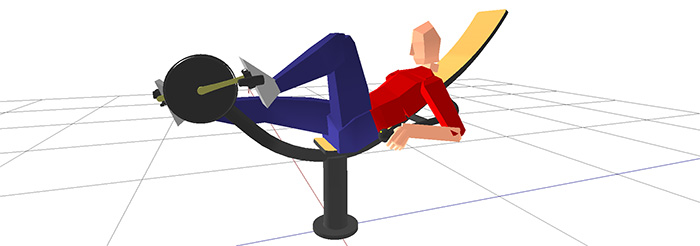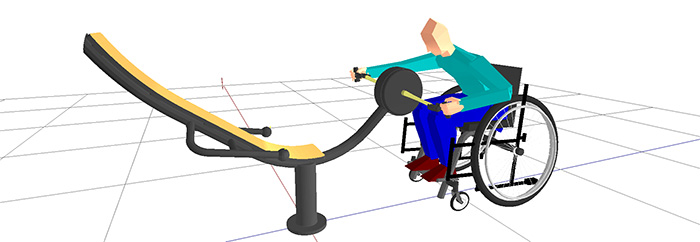HAGS-SMP
This work involved the analysis of a prototype combined recumbent bicycle and hand cycle exercise machine in development by HAGS-SMP. The analysis consisted of a range of digital evaluations performed using a CAD model of the prototype machine and a range of human models within SAMMIE. The analysis considered three scenarios of use: 1. recumbent cycle, 2. seated hand cycle, and 3. wheelchair hand cycle.
The methodology aimed to establish the limits, if any, of the accommodation range of the machine in all three usage modes. This was done by starting the analysis with a 1st %ile (percentile) Chinese female digital human model, the size of which is based upon data found in ADULTDATA. At the other extreme a 99th %ile Dutch male was used as the tallest population likely to access the machine. Within these extremes a range of male and female human models were explored from the UK population to understand the accommodation of the design.

In the original configuration the placement of the cranks and the handle design resulted in an uncomforatable posture.
The analysis found that in all three configurations users suffer potential accommodation issues throughout the size range of the populations considered. The analysis identified that these issues were associated with the crank mounting height, the handle orientation and location and the geometry of the seat surface. Suggested design interventions were then prototyped by HAGS-SMP before being integrated into the final product.

The configuration evaluated also induced an uncomfortable posture for wheelchair users.
The use of digital human modelling in the design process allowed accommodation to be explored in an expedient manner with a very broad range of the population that would have been difficult to obtain in the real world. Issues could be identified and solutions proposed before the design was finalised.






